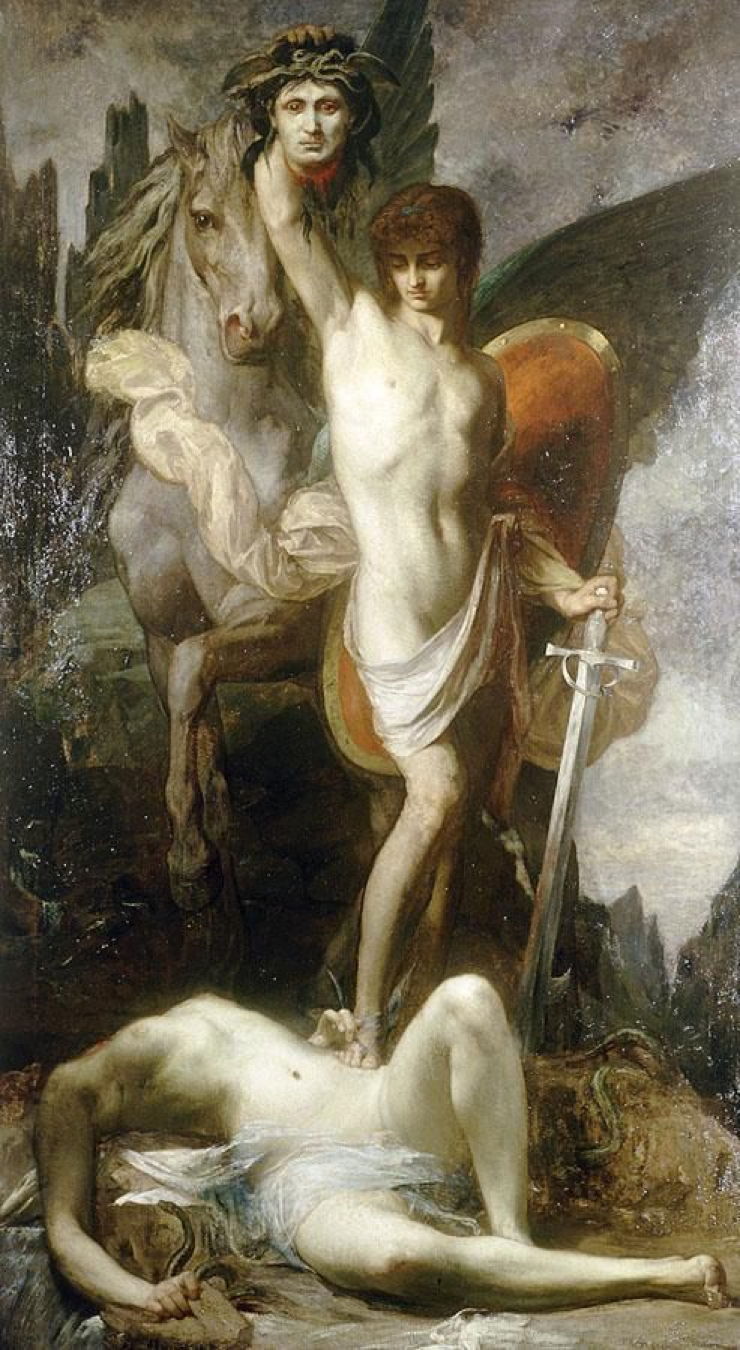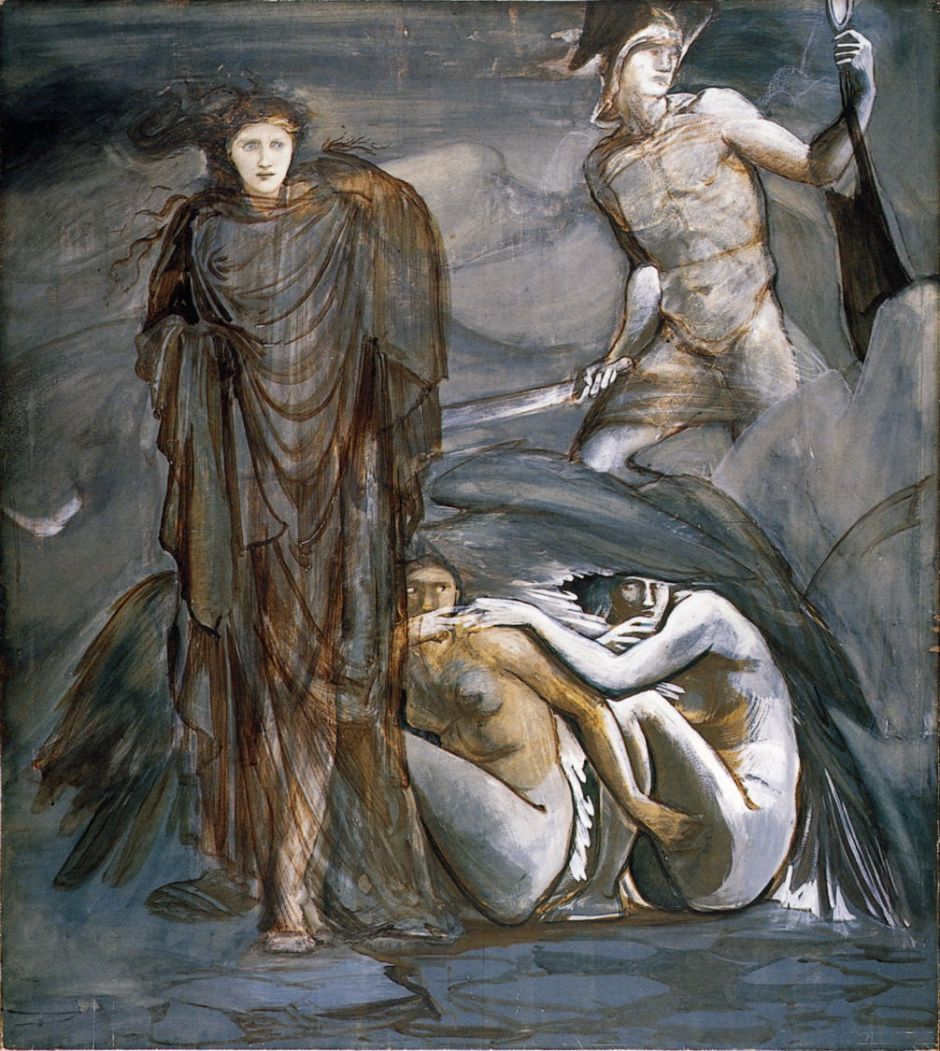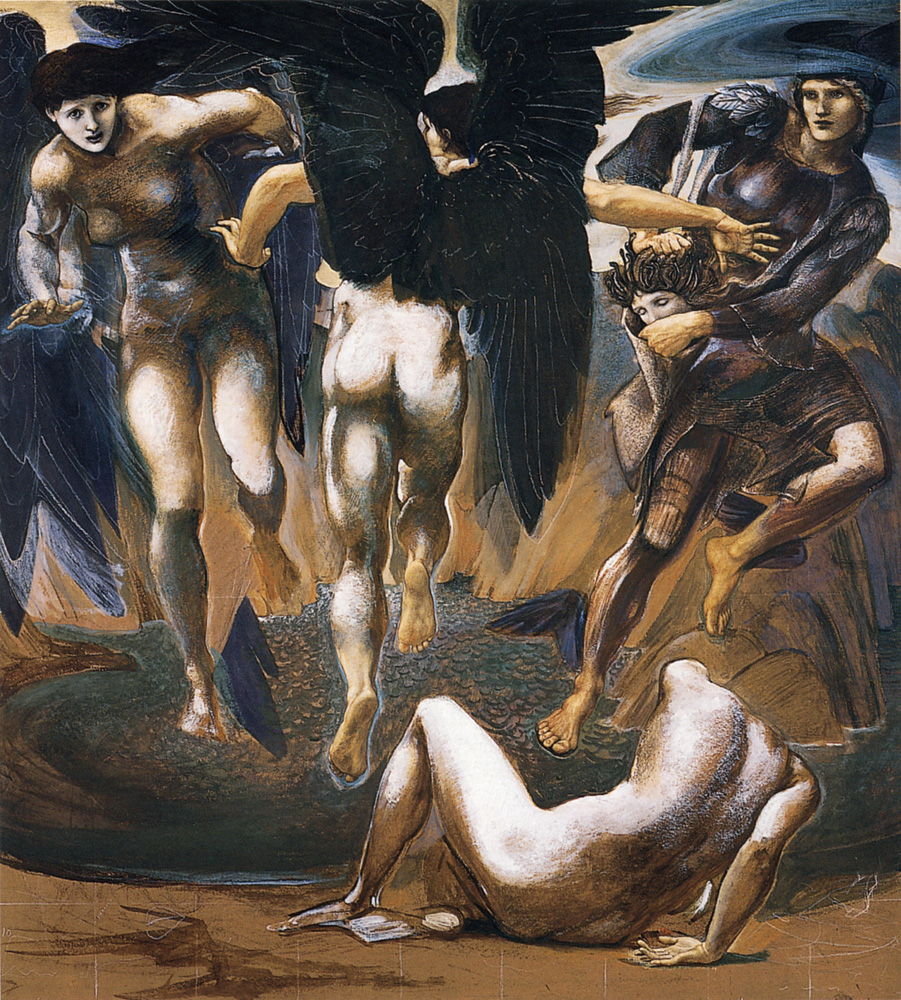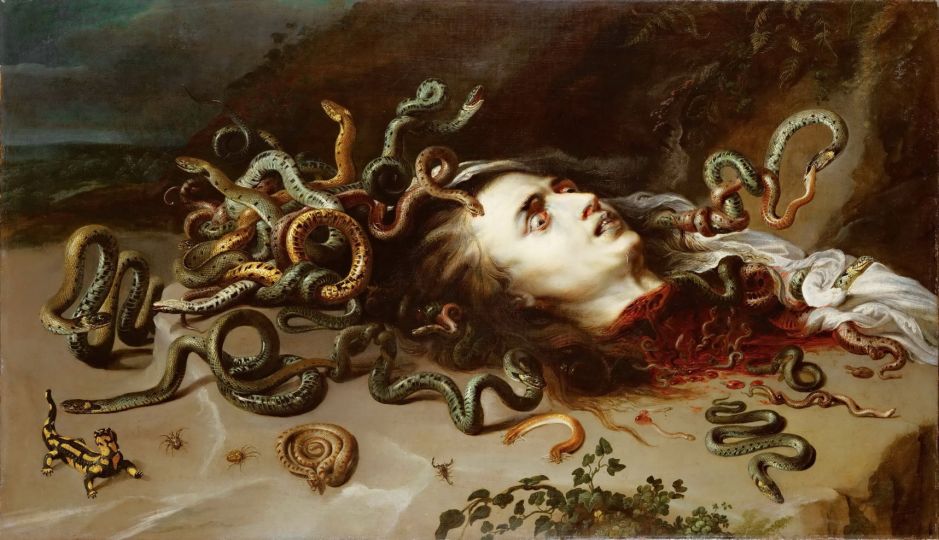When Perseus has rescued Andromeda from the jaws of the sea monster, he makes offerings to the gods and prepares for his wedding to his newly-won bride. It’s then, at his wedding feast, that Ovid has Perseus tell the story of his encounter with the Gorgon Medusa, so drawing Book 4 of the Metamorphoses to its conclusion.
Their wedding feast is celebrated in grand style in Andromeda’s parents’ palace. Once the banquet is over, Perseus asks about the kingdom, and King Cepheus, his new father-in-law, asks him how he came to acquire Medusa’s head.
In what must be one of the most extraordinary wedding speeches ever, Perseus then gives a short and detached account of how he beheaded Medusa. He first went to the two Graiae, the sisters who guarded Medusa, and stole the single eye they shared between them. As they were then unable to keep watch, he travelled on to the land where Medusa lived. This was distinguished by abundant figures of animals and people who had been turned to stone by the sight of her face.
As he approached Medusa, Perseus was careful to look at her only indirectly, via the reflection in his polished shield, so he didn’t run the risk of being turned to stone. He found her in a deep sleep, and working with her image in reflection, cut her head off. From her blood were born the winged horse Pegasus and his human brother Chrysaor.

Although Baldassare Peruzzi must have been very familiar with the story, his fresco in the Sala delle Prospettive of the Villa Farnesina in Rome takes a liberal approach. Perhaps to simplify his composition and make the action more direct, Perseus doesn’t view Medusa via her reflection in his shield, but in Perseus and Pegasus (1510-11) the hero looks straight at his victim. The white head of Pegasus, at the far right, was born from the blood spilt from Medusa’s beheading, so is later in time than the events at the left.

Eugène Romain Thirion’s Perseus Victorious Over Medusa (1867) keeps to convention, with the hero holding Medusa’s head aloft, and facing away from him, in triumph. He shows Pegasus behind, but not Chrysaor, who is usually omitted from these paintings and from some literary accounts.
As with the rest of the story of Perseus, it’s Edward Burne-Jones who provides the most complete and explicit account, in his watercolour studies for his Perseus cycle.

The fourth painting in the series, The Finding of Medusa (1882), progressed no further than this unfinished bodycolour study. It shows Perseus, wearing the helmet of Hades for invisibility, brandishing his adamantine sword, and viewing the scene in his mirror, in the Gorgons’ cave. Medusa, her hair yet to be detailed into snakes, is stood with a fearsome expression, while her two immortal sisters are scrunched together under their wings.

The fifth in the series, The Death of Medusa I (1882), was completed in bodycolour study but not in a final oil version. Perseus has just cut Medusa’s head off, and holds it aloft with his left hand, at the far right edge of the painting. The adamantine sword is still in his right hand, and the kibisis is slung around his neck. Emerging from the severed neck, as if in collage, are Pegasus and Chrysaor, the latter shown as the associated person and without his characteristic curved golden sword. Three of the serpents from Medusa’s head have detached and fallen to the ground.

The sixth in the series, The Death of Medusa II (1881-2), completes the story of Medusa, as Perseus flees from the Gorgons. The headless body of Medusa is left on the ground, and her sisters fly around searching for her assailant. Perseus wears the helmet of Hades to maintain his invisibility, and is flying away with his winged sandals, while inserting Medusa’s head in the kibisis. This too was never realised in a final version painted in oils.
Perseus then gives a summary of his escape and flight around the world before he discovered Andromeda in distress. He is finally asked how Medusa came to be the only one of the three Gorgons who had snakes in her hair. Perseus replies with a summary of the story of Medusa’s rape by Neptune in the temple of Minerva, and how that goddess transformed Medusa’s hair as ‘punishment’ for her rape.

Carlos Schwabe’s watercolour of Medusa from 1895 has feline eyes and the characteristic wide-mouthed look of horror.

The great Polish artist Jacek Malczewski made Medusa a recurrent theme in his work. Here I show his Medusa (1900), above, in which the snakes adorning her hair curl and sweep in symmetry, amid more natural locks. In his painting below, he pairs his sculptor friend with the Gorgon in this Portrait of Tadeusz Błotnicki with Medusa (1902).


The most famous of her portraits is Caravaggio’s Medusa from about 1597, which was actually his second version and is now in the Uffizi in Florence; the first is slightly smaller and is in a private collection. Unusually for Caravaggio, this was painted on a tondo. He follows traditional lines, with ample blood and abundant snakes, and captures the open-mouthed horror in her face.

Shortly afterwards, the young and flourishing Rubens painted his remarkable The Head of Medusa (c 1617). This most probably shows the head after Perseus had placed it on a bed of seaweed, when he had rescued Andromeda in the previous story. Rubens shows an exuberant mass of snakes, even a lizard and a scorpion, more of which appear to be forming in the blood exuding at the neck.

